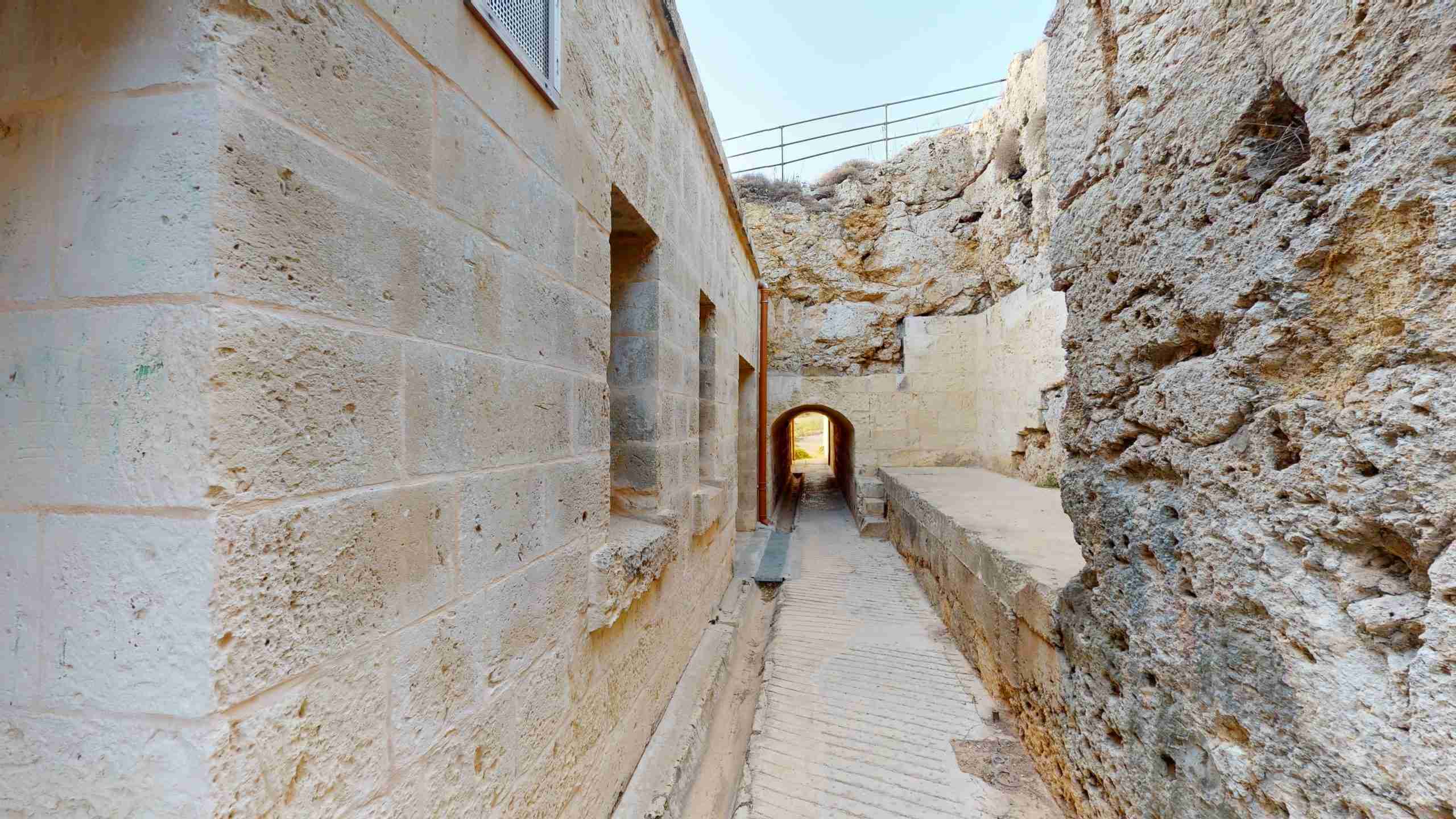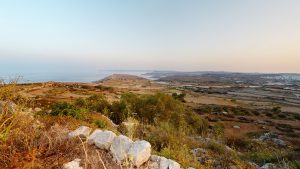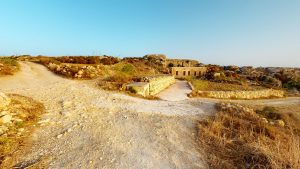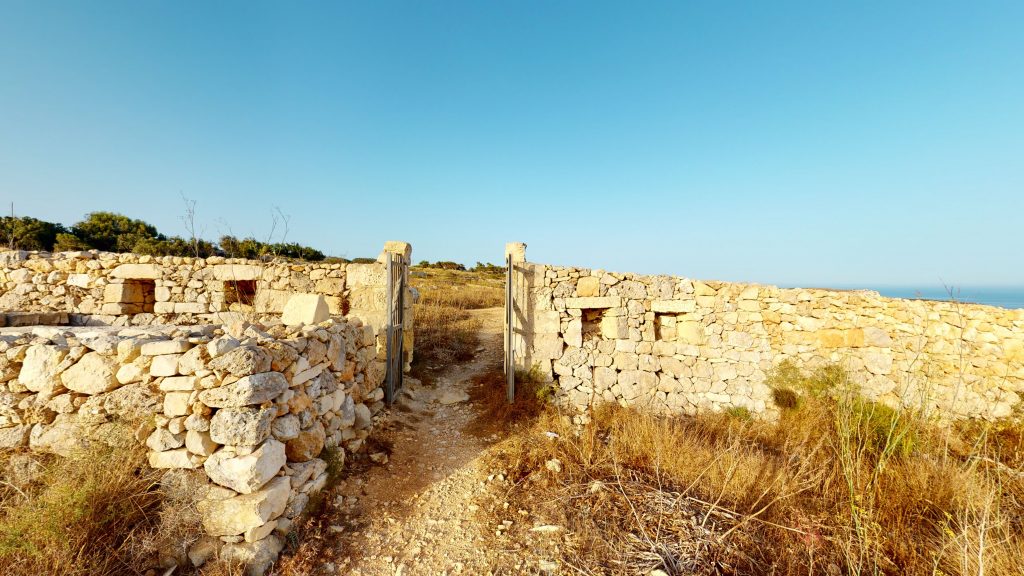
Kunċizzjoni Electric Light Engine Room
WELCOME!
to
Kunċizzjoni Electric Light Engine Room
On this page you will find a number of features that will give you a good perspective and understanding of the amazing facts about this unique monument to human ingenuity.

The Kunċizzjoni Electric Light Engine Room is an underground defensive structure built at the dawn of the discovery of electricity and employed for coastal defence.
Background History
 The Victoria Lines, originally known as the Northwest Front are a line of fortifications that spans 12 kilometres along the width of Malta, dividing the north of the island from the more heavily populated south. When built by the British military in the late 19th century, the line was designed to present a physical barrier to invading forces landing in the north of Malta, intent on attacking the harbour installations, so vital for the maintenance of the British fleet, their source of power in the Mediterranean.
The Victoria Lines, originally known as the Northwest Front are a line of fortifications that spans 12 kilometres along the width of Malta, dividing the north of the island from the more heavily populated south. When built by the British military in the late 19th century, the line was designed to present a physical barrier to invading forces landing in the north of Malta, intent on attacking the harbour installations, so vital for the maintenance of the British fleet, their source of power in the Mediterranean.
By 1888, it was already clear that the north west front has serious defence limitations towards the extremities of the Victoria Lines, particularly to the west.
“… the manoeuvres which recently took place, show that it is possible for enemy troops to land in Fomm ir-Riħ and gain the rear of the fortified (Victoria) line unperceived from the existing work. Such an operation might be prevented by strengthening the line between Benjemma and the sea and taking advantage of the obstacles which already exist”.
Lieutenant General Sir Lothian Nicholson and Major-General Goodenough.
The recommendations included building blockhouses for troops, erecting emplacements for quick firing guns, scarping of the cliff face and deploying farmhouses for defence purposes.
The Kunċizzjoni Electric Light Engine Room was built by the British Military between 1897 and 1917. It is not conceived as part of the Victoria Lines defence system, but was built to strengthen the weaknesses of the western extremity of the Victoria Lines overlooking Fomm ir-Riħ Bay.
Engine Room was built by the British Military between 1897 and 1917. It is not conceived as part of the Victoria Lines defence system, but was built to strengthen the weaknesses of the western extremity of the Victoria Lines overlooking Fomm ir-Riħ Bay.
Records show that on the 11th of November 1896, a contract of freehold purchaser was signed between the Secretary of State and Baron Sciberras Trigona on behalf of the Benedictine Nuns of Mdina.
The site on which Kunċizzjoni Electric Light engine room was built was bought by the British Military in 1896. By April 1897, works were already in progress and, as can be seen in official records found at the National Archives in London, the redoubt was already in place.
On the 21st of July 1904, a contract was signed, between the secretary of State and Reverend Giuseppe Dei Conti Manduca noe to acquire the Directum Dominium and the Noble Charles Edward Strickland to acquire the Utile Dominium.
The site used the latest military technology available. Although only a few upright sections remain, the site made early use of barbed wire for costal defence. Other defence features included prickly pear plants, the scarping of part of the perimeter slope, rubble wall infantry field defences, a musketry gallery, a fire trench and maxim machine guns.
The external windows and door of the redoubt were protected by solid steel plates and the internal windows by corrugated steel roller shutters. The above-ground facility consisted of two concrete boxes, one to house the search light, located further down the hill towards the northwest, and one to house the direction observer. The two facilities were connected by a communication underground masonry construction, cut into the upper coralline limestone. The facility included quarters for the caretaker.
This military installation is unique in Malta.

Royal Artillery Searchlights
The Royal Navy were the first to see the value of searchlights, introducing them into service on ships in the 1880s to facilitate naval gun fire on to enemy shipping at night.
The Army first deployed searchlights in South Africa during the Boer War, first in a coastal defence role to provide light barriers across estuaries and then on land for detecting troop movements at night around defended positions.
Col Baden-Powell, of Boy Scout fame, historically made use of searchlights during the Defence of Mafeking, where he used improvised searchlights at various locations fooling the Boers into believing that the whole position was ringed with them, thus deterring a night attack.
The early pioneering of electrical searchlights at the turn of the century was carried out by the Voluntary Corps of Electrical Engineers which had been formed from the Institute of Electrical Engineers. By 1907 the Corps had become the London Electrical Engineers, Royal Engineers, Territorial Force. It was this need for technical knowledge of electricity that searchlights were given as a responsibility of the Royal Engineers.
Searchlights were still being used very much in the coastal and land role and had yet to be seen as an anti-aircraft asset, this was soon to change. The aircraft that first alerted Britain to the threat from the air was not a fixed wing aircraft but Germany’s development of the airship of which there were five battalions by 1911…